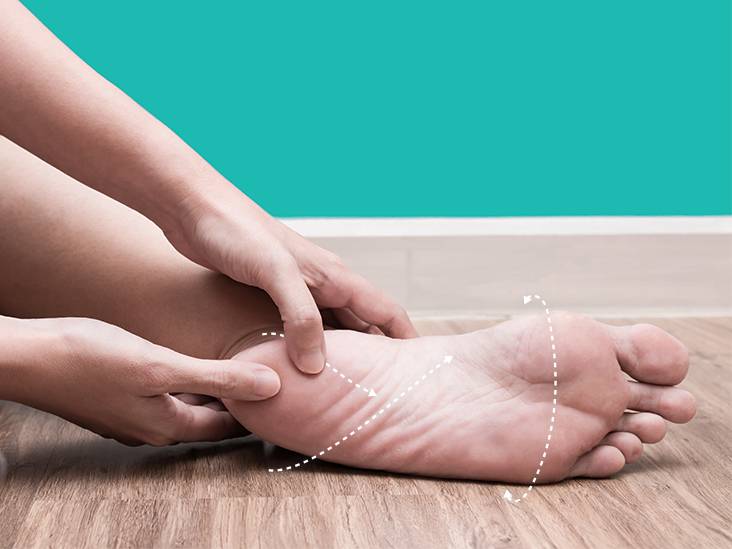Ever had excruciating, stabbing heel pain whenever you step on it? One cause of this could be planter fasciitis. Plantar fasciitis is characterized by an inflammation in the band of tissue that connects your heel too your toes which causes pain. This pain usually gets worse after standing on your feet for long. Runners and those who are overweight are more susceptible to developing this problem.
Plantar fasciitis usually last only a few months if proper care is taken. There are several remedies and treatments for this that are very helpful.
- Conservative treatment
The pain cause by plantar fasciitis can be reduced immensely by the use of pain relieving medication like ibuprofen or naproxen. Though using pain medication frequently for an extended time is not recommended. Instead, using therapy can be a better option to reduce symptoms. Common effective therapies include:
- Physical therapy
Physical therapy involves stretching the muscles to ease the pain in feet and the lower leg. The therapist will instruct you to regularly exercise the plantar fasciitis and the Achilles tendons. It will also help you strengthen the lower leg muscles. Athletic taping can also be recommended in order to support your foot.
- Splints for the night
Splints stretching from the calf to the foot arch can be worn during the night to stretch your foot while you are asleep. The stretching of the Achilles tendon and the plantar fasciitis in this position, the splint can relieve pain over time.
- Arch support/orthotics
Orthotics can be prescribed to you so that the pressure can be evenly distributed throughout the feet.
- Non-conservative surgical procedures
Conservative means might not work in every situation and when the conservative methods fail to bring pain relief, the pain management doctor could recommend the following non-conservative procedures.
- Injections
One method to bring temporary pain relief is the use of steroid medication which is injected into the tender part of your feet. This is only done under doctor’s prescription because multiple shots can cause complications. Multiple shots can cause a weakening of the plantar fasciitis and ultimately could rupture the muscle. If the muscle ruptures, tissue-healing can be promoted by injecting platelet rich plasma taken from their own blood.
- Extracorporeal shock wave therapy
This therapy uses sound waves directed towards the area of pain as a means of increasing healing. This treatment is reserved for critical conditions of plantar fasciitis which have not been responding to other conservative treatments.
- Surgery
This method of treatment is used only with intense, chronic pain cause by plantar fasciitis. This procedure involves surgery disconnect the plantar fasciitis and the heel bone. The surgery is conducted using an open procedure or with a tiny incision and local anesthetic.
- Ultrasonic tissue repair technique
This technique is the least invasive of all surgical therapies for plantar fasciitis. It uses ultrasound imaging to keep track of a needlelike probe that is inserted into the plantar fasciitis. The ultrasound energy then causes the probe to vibrate and break the damaged part which is then sucked out using suction.
Self-care tips to minimize plantar fasciitis pain
- Keep your weight in check. Being overweight increases problems for plantar fasciitis as it causes strain on the already damaged muscle.
- Wear supportive shoes that reduce strain on the plantar fasciitis muscle by evenly distributing weight. Supportive shoes include those low heels with thick and comfortable shoes and an adequate arch to support the muscle. Walking barefoot is also not advisable.
- Switch to a lighter sport. Waking and running causes problems for the damaged muscle so it is best to switch to a sport that is less tiring for your feet, like swimming.
- Ice the sore area. Icing can help reduce pain and inflammation greatly so it is advisable to hold an icepack or ice covered with a cloth over the area that hurts, for 15 minutes, at least 3 times a day.
- Exercise your feet muscles regularly by stretching the arch of your feet. Usually, it is overuse and strain that causes plantar fasciitis so the reasonable solution is to rest your feet and also practice stretches. Stretching your plantar fascia from tightening up and causes distress.
If home remedies do not reduce heel pain induced by plantar fasciitis, it would be best to seek an appointment with a doctor and follow instructions given.
The pain causes by plantar fasciitis can range from chronic to mild. In less severe cases, conservative methods of treatments and home remedies are normally effective in pain relief but if these methods are unsuccessful, less conservative methods might be necessary. With medication or other methods of treatment, it is also necessary that you take good care of your feet, do not exert them unnecessarily, use supports and the right shoes until the muscles fully heal. In rare cases, surgery is the only option.
For more details please visit our website shoespreview.com
My name is Sardar Ayaz a professional content writer and SEO expert having Proven record of excellent writing demonstrated in a professional portfolio Impeccable grasp of the English language, including idioms and current trends in slang and expressions. I have ability to work independently with little or no daily supervision with strong interpersonal skills and willingness to communicate with clients, colleagues, and management.
I can produce well-researched content for publication online and in print, organize writing schedules to complete drafts of content or finished projects within deadlines. I have 12 years’ experience to develop related content for multiple platforms, such as websites, email marketing, product descriptions, videos, and blogs.
I use search engine optimization (SEO) strategies in writing to maximize the online visibility of a website in search results
